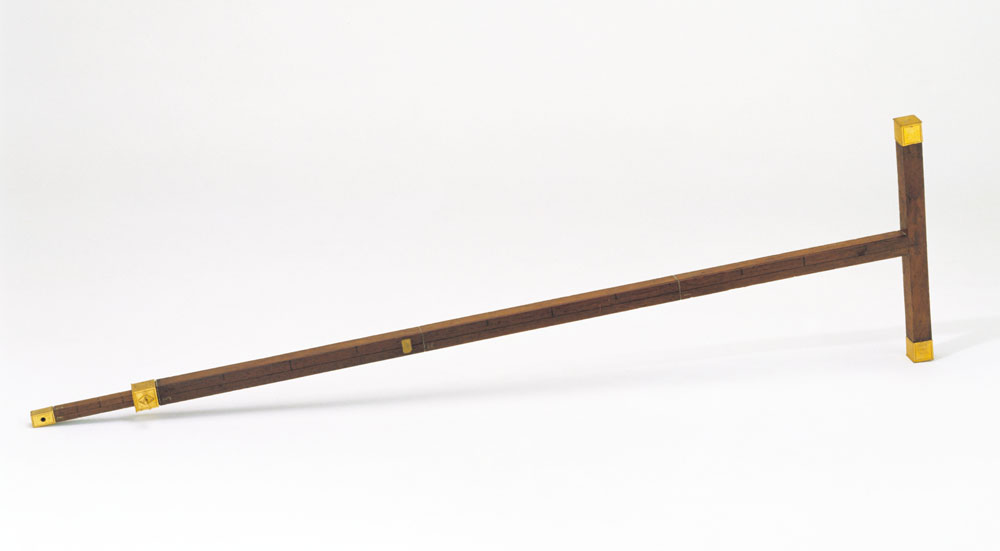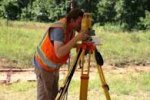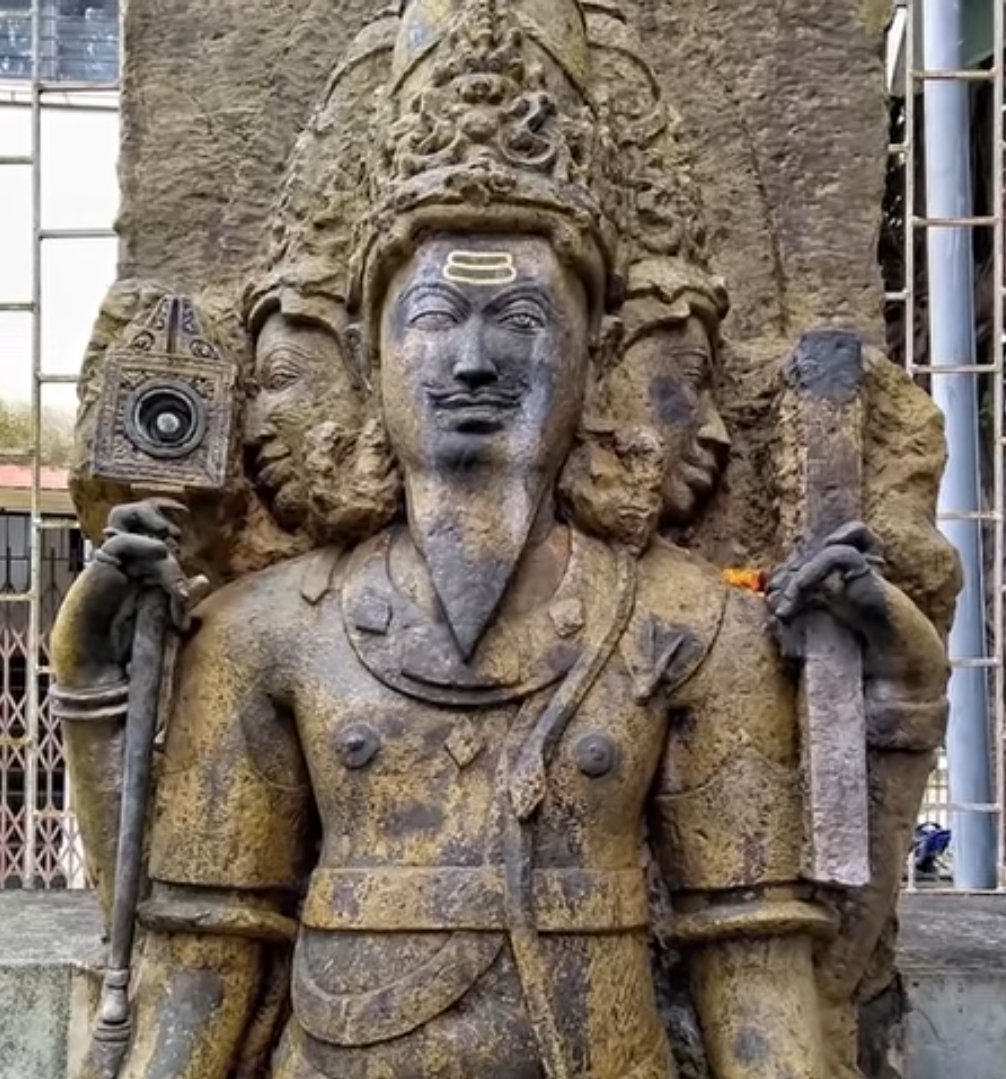The Story of Rachel in the Bible and the idols of her Father
Rachel in the traditional biblical tale was the second, and favourite, of Jacob’s two wives. Here is what Wikipedia has to say about her:
Rachel (
Hebrew: רָחֵל, romanised:
Rāḥêl, lit:‘ewe') was a Biblical figure, the favourite of Jacob’s two wives, and the mother of Joseph and Benjamin, two of the twelve progenitors of the tribes of Israel. Rachel's father was Laban. Her older sister was Leah, Jacob's first wife; their mother was Adinah. Her aunt Rebecaa was Jacob's mother.
It is interesting that her name when literalised means a ‘
ewe’ or female sheep.
Rachel is first mentioned in the Bible in
Genesis 29 when Jacob happens upon her as she is about to water her father's flock. She was the second daughter of Laban, Rebecca's brother, making Jacob her first cousin. Jacob had travelled a great distance to find Laban. Rebekah had sent him there to be safe from his angry twin brother, Esau, who he had cheated out of his inheritance.
During Jacob's stay, he fell in love with Rachel and agreed to work seven years for Laban in return for her hand in marriage. On the night of the wedding, the bride was veiled and Jacob did not notice that Leah, Rachel's older sister, had been substituted for Rachel. Whereas "
Rachel was lovely in form and beautiful", "
Leah had tender eyes". Later Jacob confronted Laban, who excused his own deception by insisting that the older sister should marry first. He assured Jacob that after his wedding week was finished, he could take Rachel as a wife as well, and work another seven years as payment for her. When God "
saw that Leah was unloved, he opened her womb" (Gen 29:31), and she gave birth to four sons.
Notice that seven, as in seven years, is the number of perfection.
Rachel, like Sarah and Rebecca, remained unable to conceive. Rachel then became jealous of Leah and gave Jacob her maidservant, Bilhah, to be a surrogate mother for her. Bilhah gave birth to two sons that Rachel named and raised (
Dan and Napthali). Leah responded by offering her handmaid
Zilpah to Jacob, and named and raised the two sons (Gad and Asher) that Zilpah bore. According to some commentaries, Bilhah and Zilpah were half-sisters of Leah and Rachel. After Leah conceived again, Rachel was finally blessed with a son,
Joseph, who would become Jacob's favourite child.
Rachel's son Joseph was destined to be the leader of Israel's tribes between exile and nationhood. This role is exemplified in the Biblical story of Joseph, who prepared the way in Egypt for his family's exile there.
After Joseph's birth, Jacob decided to return to the land of Canaan with his family. Fearing that Laban would deter him, he fled with his two wives, Leah and Rachel, and twelve children without informing his father-in-law. Laban pursued him and accused him of stealing his idols. Indeed, Rachel had taken her father's idols, hidden them inside her camel's seat cushion, and sat upon them. Laban had neglected to give his daughters their inheritance (
Genesis 31:14–16).
Not knowing that the idols were in his wife's possession, Jacob pronounced a curse on whoever had them: "
With whoever you will find your gods, he will not live" (
Genesis 31:32). Laban proceeded to search the tents of Jacob and his wives, but when he came to Rachel's tent, she told her father, "
Let not my lord be angered that I cannot rise up before you, for the way of women is upon me" (
Genesis 31:35). Laban left her alone, but the curse Jacob had pronounced came true shortly thereafter.
Near Ephrath, Rachel went into a difficult labour with her second son, Benjamin. The midwife told her in the middle of the birth that her child was a boy. Before she died, Rachel named her son Ben Oni ("son of my mourning"), but Jacob called him Ben Yamin (Benjamin).
Rashi explains that Ben Yamin either means "
son of the right" (i.e., "
south"), since Benjamin was the only one of Jacob's sons born in Canaan, which is to the south of Paddan Aram; or it could mean "
son of my days", as Benjamin was born in Jacob's old age.
However, let us ignore for the moment the traditional Biblical narrative and look at the story of Rachel through what the C’s have told us really lay behind the story, as it is very important to the trail of the Holy Grail and the Ark of the Covenant after Abraham/Moses left Egypt.
Session dated 23 August, 2001:
Q: (L) Who was Hagar the Egyptian?
A: Princess of Egypt.
Q: (L) Was she Sarah's maid?
A: No.
Q: (L) Was she Sarah's daughter?
A: Right nurture to.
Q: (L) What do you mean? I don't understand.
A: Sara's daughter by Akhenaten.
Q: (L) Did Abraham have a child by Hagar also, his wife's daughter by another man?
A: Yes.
Q: (L) Well, that's pretty incestuous. Did Sarah actually get so jealous of her own daughter's child that she demanded that Abraham abandon her?
A: Close.
Q: (L) When did this tribe finally arrive in Israel and settle down. Was this after 40 years living as Bedouins?
A: Pretty much.
[ ]
Q: (L) Did they, or did they not, have the Ark of the Covenant? Was this given to this group of people by 4th density?
A: Close.
Q: (L) Who was it originally given to?
A: Abraham.
Q: (L) Who gave it to him?
A: Sara.
Q: (L) Is the story of Rachel stealing the household gods from her father may have really been the story of Sara stealing the Ark from Akhenaten?
A: Yes.
Q: (L) No wonder Akhenaten was hot to follow them. He wasn't after Sara, he wanted his Ark back.
A: Yes.
Q: (L) Who gave the Ark to Akhenaten?
A: STS 4th Density.
Remember here that Abraham is also Moses and Jacob for these purposes and Sarah is not only Nefertiti but also Rachel. Hence, where Rachel is taking her father’s (Laban’s) idols, in reality it is Nefertiti stealing the idols, i.e., the Ark of the Covenant and probably the Holy Grail and other high tech artefacts as well, from Pharaoh Akhenaten, her husband.
Teraphim
However, it is interesting when you look into the word “idol”, or ‘
Teraphim‘ from a Hebrew perspective, for the name connotes far more than just graven images made from metal, stone or wood.
Teraphim (Hebrew: תרף
teraph; plural: Hebrew: תרפים
teraphim) is a Hebrew word from the Bible, found only in the plural, of uncertain etymology. Despite being plural,
Teraphim may refer to singular objects, using the Hebrew plural of excellence. The word
Teraphim is explained in classical rabbinical literature as meaning
disgraceful thing (dismissed by modern etymologists), and in many English translations of the Bible it is translated as
idols, or household god(s), although its exact meaning is more specific than this, but unknown precisely.
However, from our perspective the rabbinical literature may be closer to the mark. What interests me is that the word ‘Teraphim’ is similar to ‘Seraphim’ save for the first letter. The Seraphim are a class, or choir, of angel in Jewish and Christian tradition.
A
seraph (
/ˈsɛrəf/, "the burning one"; plural
seraphim /ˈsɛrəfɪm/) is a type of celestial or heavenly being originating in Ancient Judaism. Tradition places seraphim in the highest rank in Christian angelology and in the fifth rank of ten in the Jewish angelic hierarchy. A seminal passage in the Book of Isaiah (
Isaiah 6:1–8) used the term to describe six-winged beings that fly around the Throne of God crying "
holy, holy, holy".
However, there is emerging consensus that the motifs used to display seraphs in Hyksos-era Canaan had their original sources in Egyptian
uraeus iconography. In non-biblical sources, they are sometimes called the
Akyəst (
Ge'ez: አክይስት "
serpents", "
dragons"; an alternate term for Hell).
In the
Second Book of Enoch, two classes of celestial beings are mentioned alongside the seraphim and cherubim, known as the
phoenixes and the
chalkydri (Ancient Greek: χαλκύδραι
khalkýdrai, compound of χαλκός
khalkós "brass, copper" + ὕδρα
hýdra "
hydra", "
water-serpent"—lit. "
brazen hydras", "
copper serpents"). Both are described as "
flying elements of the sun" (flying saucers anyone!) that reside in either the
4th or
6th heaven (Density?), who have twelve wings and burst into song at sunrise.
The fact that the word ‘
Teraphim’ is of uncertain etymology but is close to the word ‘
Seraphim’, which can mean in non-biblical sources a serpent or dragon, makes me think of the Lizzies; particularly when the C’s have revealed that it was 4D STS forces that gave Akhenaten the Ark of the Covenant. There has to be more than a coincidence operating here.
However, getting back to the Bible, according to Genesis 31, Rachel takes the teraphim belonging to her father Laban when her husband
Jacob escapes. She hides them in a saddle bag and sits on them when Laban comes looking for them, and claims that she cannot get up because she is menstruating. From this it can be deduced that they were small, perhaps 30–35 cm. Her exact motive in doing so is subject to controversy amongst the commentators: Some argue she took the teraphim in order that her father not have idolatrous paraphernalia, while others explain that she wanted to use them herself, and yet others say it was at the discretion of her husband
Jacob.
I would ignore the reference to size here since, according to the C’s, this is merely a cover story. In other biblical stories where teraphim are involved, they can be much larger objects.
For example, in
1 Samuel 19,
Michal helps her husband
David to escape from her father
Saul. She lets him out through a window, and then tricks Saul's men into thinking that a teraphim in her bed is actually David. This suggests the size and shape is that of a man. It also refers to "the" teraphim, which implies that there was a place for teraphim in every household. Van der Toorn claims that "
there is no hint of indignation at the presence of teraphim in David's house." However, the same word is used in 1 Samuel 15:23 where Samuel rebukes Saul and tells him that "
presumption is as iniquity and teraphim". Here the idea is that rebellion is just as bad as teraphim, the use of which is thus denounced as idolatry. Others explain that the teraphim in this context refer to decorative statues,
not to idolatrous ritual items.
The
teraphim were
outlawed in Josiah’s reform (
2 Kings 23:24), but are mentioned again in
Hosea 3:4, where it says that "
the Israelites will live many days without king or prince, without sacrifice or sacred stones, without ephod or teraphim." As in the narrative of Micah’s Idol, the teraphim is closely associated with the
ephod*, and both are mentioned elsewhere in connection with
divination it is thus a possibility that the
Teraphim were involved with the process of
cleromancy**.
*An
ephod (
Hebrew: אֵפוֹד
’êp̄ōḏ;
/ˈɛfɒd/ or
/ˈiːfɒd/) was an artifact and an object to be revered in ancient Israelite culture, and was closely connected with
oracular practices and priestly ritual.
Ephod - Wikipedia (see figure below)
**Cleromancy is a form of
sortition, casting of lots, in which an outcome is determined by means that normally would be considered random, such as the rolling of dice, but are sometimes believed to reveal the will of God or other universal forces and entities.
Jewish High Priest wearing the sacred vestments. The ephod is depicted here in yellow.
In the
Books of Samuel and
Books of Chronicles, David is described as wearing an ephod when dancing in the presence of the Ark of the Covenant (2 Samuel 6:14, 1 Chronicles 15:27) and one is described as standing in the sanctuary at Nob, with a sword behind it (1 Samuel 21:9). In the
book of Exodus and in
Leviticus one is described as being created for the High Priest to wear as part of his official vestments (Exodus 28:4+, 29:5, 39:2+; Leviticus 8:7).
Elsewhere in the Bible, there are other less than flattering descriptions of teraphim:
In
Zechariah 10:2 it states: "For the
teraphim utter nonsense, and the
diviners see lies; the dreamers tell false dreams, and give empty consolation. Therefore the people wander like sheep; they are
afflicted for want of a shepherd."
Other suggested meanings and uses
Casper Labuschagne claims that it comes via
metathesis from the root פתר, "
to interpret". Karel Van der Toorn argues that they were ancestor figurines rather than household deities, and that the "current interpretation of the teraphim as household deities suffers from a one-sided use of Mesopotamian material."
That Micah, who worshipped Yahweh, used the
Teraphim as an idol, and that Laban regarded the Teraphim as representing
his gods, is thought to indicate that they were evidently images of Yahweh. It is considered possible that they originated as a fetish, possibly initially representative of ancestors, but gradually becoming
oracular.
Benno Landsberger and later
Harry Hoffner derive the word from Hittite
tarpiš, "
the evil daemon".
We should recall that Nefertiti was a Hittite according to the C’s, so this particular interpretation may well be relevant to us.
What is emerging here is a picture of a teraphim being something involved in divination, interpretation and/or oracular utterances (think of the Oracle of Delphi) and not just a simple statue or image. The fact that Laban, who we now know was Akhenaten, saw the teraphim as a representation of his god leads me to think that one of the teraphim that Rachel, as Nefertiti, took and gave to Jacob/Abraham/Moses was the Holy Grail or the crystal skull the Templars venerated as Baphomet. As regards oracular utterances, I am mindful of the C’s statement that Baphomet was a skull of pure crystal to which they added: “
Swords points signify crystal transmitter of truth beholden“.
The Mercy Seat
We also know that Yahweh would manifest between the two angels flanking the Mercy Seat of the Ark of the Covenant. According to the Bible the
kaporet (Hebrew: הַכַּפֹּֽרֶת
ha-kappōreṯ) or M
ercy Seat was the gold lid placed on the Ark of the Covenant, with two cherubim beaten out of the ends to cover and create the space into which Yahweh was said to appear. This was connected with the rituals of the Day of Atonement ('Yom Kippur').
According
Exodus 25:19;
37:6, the cover was made from pure gold and was the same width and breadth as the ark beneath it, 2.5 cubits long and 1.5 cubits wide. Two golden cherubim were placed at each end of the cover facing one another and the mercy seat, with their wings spread to enclose the mercy seat (
Exodus 25:18–21). The cherubim formed a seat for Yahweh (
1 Samuel 4:4). The ark and mercy seat were kept inside the Holy of Holies, the temple’s innermost sanctuary which was separated from the other parts of the temple by a thick curtain. The Holy of Holies could be entered only by the high priest on the
Day of Atonement. The high priest sprinkled the blood of a sacrificial bull onto the mercy seat as an atonement for the sins of the people of Israel.
The etymology of
kaporet (
Hebrew: הַכַּפֹּֽרֶת) is unclear.
The Oxford Dictionary of the Jewish Religion states that "some translate it simply as ‘cover’. The phrase 'M
ercy Seat' is not a translation of the Hebrew term
kapporet though, which appears in its place in the Masoretic text but instead is the translation by William Tyndale of the German term
gnadenstuhl, from the same narrative position in Martin Luther's translation of the Bible into German;
gnadenstuhl literally means
'seat of grace'.
Though
kapporet is probably derived from
kaphar, which is often considered to mean ‘
cover’, the literal meaning of
kaphar is
“wipe out”, implying that
kapporet means a thing of wiping out or thing of cleansing.
In the context of how the Ark of the Covenant was used in battle by the Israelites, this alternative meaning may be more appropriate for our purposes.
Interestingly, the Latin word "
Caput", which may possibly have some etymological similarity to kaporet,
means literally "
head" and by
metonymy "
top". This would be very appropriate if the Mercy Seat was the top of a chest holding a crystal skull.
The Gift of God
The other name the C’s gave to the Merkaba was the ‘Gift of God’. There is an implication here that the Merkaba could provide the possessor anything they wanted, including perhaps food. This makes me think that the crystal skull could transmute matter and produce what you needed, perhaps like a Star Trek replicator machine or super 3D printer. This could explain how Moses was able to feed the children of Israel in the desert during the 40-year period following the Exodus with manna from heaven. However, this may be stretching things somewhat as there are other possible explanations for manna.
Super Technology
Although I have concentrated here on the high tech devices Akhenaten may have had in his possession and which Abraham/Moses stole, the Egyptian pharaohs were not unique among kings of ancient times for possessing special high tech or magical devices.
Just this week, I was watching an ‘
Ancient Aliens’ programme, which concentrated on special relics, many of which were owned by kings and emperors. The programme made reference to the following kings who were reputed to have had special technology provided by the gods:
- The Yellow Emperor of China who travelled in a flying dragon and had a special cauldron.
- Emperor Jimmu (神武天皇, Jinmu-tennō) was the first legendary emperor of Japan who in Japanese mythology is regarded as a descendant of the sun goddess Amaterasu who gave him a magic mirror, a jewel and a sword as gifts. The mirror allowed him to see all that was going on within his island empire. Apparently, these gifts are still in the possession of the Japanese royal family today and only the Emperor or his Shinto priests are able to see them.
- Woden, a god of the Anglo-Saxons (who was Odin to the Norse and Votan to the Germans) was meant to lead a hunt across the sky every year in a fiery eight-legged horse as the god of the wind (sounds like a flying machine to me!).
- Apart from these legendary figures mentioned in the programme there is, of course, Odin who had a special spear as his chief weapon called Gungnir (A.K.A. “The Spear of Heaven”), which was a three-pronged spear (a trident) that only he could wield. The spear is described as being so well balanced that it could strike any target, no matter the skill or strength of the wielder.
- Then there is Mjölnir (from Old Norse Mjǫllnir), which is the hammer of the thunder god Thor in Norse mythology, which he used both as a devastating weapon and as a divine instrument to provide blessings.
- Finally, the Tuatha Dé Danann supposedly brought four magical treasures with them to Ireland. These were: Dagda’s cauldron, the Spear of Lugh, the Stone of Fal and the Sword of Light (sounds a bit like a light sabre from Star Wars doesn’t it).
I hope to have more to say on these magical treasures of the Tuatha Dé Danann in a future post.








